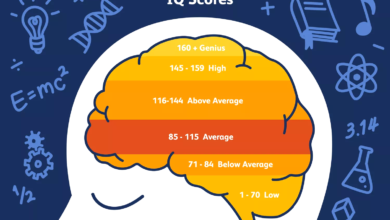The Latest Cybersecurity Threats: Safeguarding Your Digital World

In today’s interconnected and rapidly evolving digital landscape, the importance of cybersecurity cannot be overstated. As technology advances, so do the tactics employed by cybercriminals to exploit vulnerabilities and compromise sensitive information. This article delves into the most recent cybersecurity threats that individuals and businesses must know, offering insights into protective measures and strategies to mitigate potential risks.
Latest Cybersecurity Threats
The digital age has brought about unparalleled convenience and connectivity but has paved the way for new cybersecurity challenges. Cybercriminals adapt their methods as technology advances, making it crucial to stay informed about the latest threats and preventive strategies.
Ransomware Attacks on the Rise
Recent years have seen an alarming surge in ransomware attacks, where malicious actors encrypt victims’ data and demand payment for its release. These attacks often target businesses, healthcare institutions, and government agencies, causing significant financial and reputational damage.
Read More: The Importance of Cyber Laws in Pakistan
Supply Chain Vulnerabilities
Cybersecurity threats are no longer limited to direct attacks on a single entity. Supply chains have become potential avenues for breaches, as cybercriminals exploit vulnerabilities in third-party vendors to gain access to larger networks.
Phishing in New Guises
Phishing attacks have evolved beyond traditional emails. Spear phishing, smishing (via SMS), and vishing (voice phishing) are now common tactics used to deceive individuals into divulging sensitive information.
IoT Devices as Entry Points
The proliferation of Internet of Things (IoT) devices presents new challenges. Hackers can exploit security weaknesses in smart devices, using them as entry points to infiltrate larger networks.
Emergence of AI-Driven Threats
While AI has promising applications in cybersecurity, it’s also being harnessed by cyber criminals. AI-driven attacks can automate tasks like identifying vulnerabilities and launching attacks at an unprecedented speed.
Insider Threats: The Human Element
Insider threats, whether intentional or accidental, remain a persistent concern. Disgruntled employees or individuals unaware of security protocols can jeopardize an organization’s data.
Data Breaches and Privacy Concerns
In today’s digital age, where personal information is stored, shared, and transmitted online, the security of our data has become a paramount concern. Data breaches, incidents in which unauthorized individuals access sensitive information, have far-reaching consequences that can impact individuals, businesses, and even governments. This section delves into the complexities of data breaches, their implications, and the critical importance of safeguarding privacy in our interconnected world.
The Anatomy of a Data Breach
A data breach occurs when an unauthorized party gains access to confidential or sensitive information. This information can range from personal identification details and financial data to medical records and intellectual property. Breaches can happen through various means, including exploiting vulnerabilities in software, network breaches, or even social engineering attacks that trick individuals into revealing their credentials.
Implications of Data Breaches
The repercussions of a data breach can be severe and multifaceted. It can result in identity theft, financial loss, and emotional distress for individuals. For businesses, the aftermath includes reputational damage, legal liabilities, loss of customer trust, and financial penalties. Additionally, governments and organizations responsible for safeguarding citizen data can face public outrage and erosion of confidence.
The Role of Privacy Regulations
In response to the escalating threat of data breaches, governments worldwide have enacted stringent privacy regulations. The General Data Protection Regulation (GDPR) in the European Union and the Health Insurance Portability and Accountability Act (HIPAA) in the United States are prominent among these. These regulations impose strict guidelines on data handling, breach notification, and penalties for non-compliance, emphasizing the importance of protecting individuals’ rights to privacy.
Strategies for Mitigation
Preventing data breaches requires a comprehensive approach that combines technology, processes, and human vigilance:
- Data Encryption: Encrypting data renders it unreadable to unauthorized parties, adding a layer of protection even if a breach occurs.
- Regular Audits: Periodic assessments of security measures can identify vulnerabilities and help address them before they are exploited.
- Employee Training: Educating employees about cybersecurity best practices and the risks of social engineering can prevent breaches caused by human error.
- Multi-Factor Authentication (MFA): Requiring multiple forms of verification for access can significantly reduce the risk of unauthorized entry.
- Vendor Due Diligence: Organizations should assess the security practices of third-party vendors who handle their data.
Maintaining Digital Privacy
Individuals can take proactive steps to safeguard their digital privacy:
- Strong Passwords: Using unique, complex passwords for different accounts minimizes the impact of a breach on multiple fronts.
- Security Software: Employing reputable antivirus and anti-malware software can offer an additional layer of defense.
- Privacy Settings: Adjusting privacy settings on social media platforms and online accounts restricts the amount of personal information exposed.
Social Engineering Tactics
Cybercriminals often exploit human psychology through social engineering. They manipulate individuals into divulging confidential data by manipulating emotions, creating urgency, or impersonating trusted figures.
Zero-Day Exploits
Zero-day exploits target undiscovered vulnerabilities in software. Hackers capitalize on the delay between a vulnerability’s identification and patch, exposing systems.
Protecting Against Cybersecurity Threats
Staying one step ahead of cyber threats requires proactive measures and a multi-layered approach to security.
Importance of Regular Updates
Regularly updating software and systems is crucial, as updates often include patches for known vulnerabilities.
Multi-Factor Authentication (MFA)
Implementing MFA adds an extra layer of security by requiring users to provide multiple verification forms before accessing accounts or systems.
Employee Training and Awareness
Educating employees about cybersecurity best practices is paramount. They play a pivotal role in recognizing and reporting potential threats.
Read More: Career in Cybersecurity: 15 Best Cybersecurity Jobs in Pakistan
Conclusion
In an era defined by technological advancements, the constant evolution of cyber threats reminds us of the critical importance of cybersecurity. The landscape is fraught with risks that can compromise personal, business, and national security. This article has explored a multitude of cybersecurity threats, ranging from ransomware attacks to data breaches, and highlighted strategies for protection.
We must remain proactive and vigilant as we navigate this intricate digital ecosystem. The cybersecurity measures we put in place today can determine our safety tomorrow. Whether adopting multi-factor authentication, staying informed about the latest threats, or adhering to stringent privacy regulations, every step we take contributes to fortifying our defenses against cyber adversaries.
Ultimately, safeguarding our digital lives falls upon individuals, organizations, and governments. By working collaboratively and sharing knowledge, we can create a safer online environment for everyone. Let’s continue to invest in cybersecurity, prioritize privacy, and adapt to the ever-changing cybersecurity landscape. After all, securing our digital world is not just a choice – it’s a necessity.
FAQs: Cybersecurity Threats
Q: How can I protect my business from ransomware attacks?
A: Regularly back up data, educate employees about phishing, and invest in cybersecurity software.
Q: What is spear phishing?
A: Spear phishing is a targeted form where cybercriminals tailor their messages to a specific individual or organization.
Q: How can AI help in cybersecurity?
AI can automate threat detection, analyze patterns, and enhance incident response times.
Q: What steps can individuals take to enhance their online security?
A: Use strong, unique passwords, enable MFA, and exercise caution when clicking on links or sharing personal information.
Q: How often should I update my software?
A: Regular updates are crucial; set up automatic updates whenever possible.












One Comment